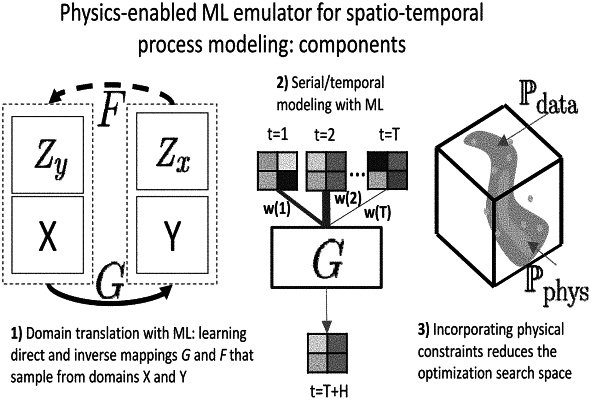| CPC G06F 30/27 (2020.01) [G06F 2111/04 (2020.01); G06F 2111/08 (2020.01); G06F 2111/10 (2020.01)] | 18 Claims |

|
1. A method for increasing a spatial resolution of gridded spatial-temporal data on weather and climate-related physical variables, including:
a. obtaining weather and climate data, the weather and climate data comprising at least one of gridded numerical simulation data having at least two spatial resolutions including at least a coarse resolution and a fine resolution, or observational data that includes at least one source of sensed physical data, wherein at least one of the gridded numerical simulation data or the observational data include weather and climate-related data;
b. pre-processing the weather and climate data;
c. training one or more probabilistic downscaling mapping functions of the at least one of the gridded numeric simulation data having at least two spatial resolutions or the observational data comprising applying interpolation filters to successively interpolate the pre-processed weather and climate data to generate output data having a resolution that is equal to the fine resolution comprising:
executing, by a network architecture, a series of tensor operations representing a set of spatial filters comprising functions that include convolutional filters, and a set of down-sampling and up-sampling steps, nonlinear operations wherein the set of spatial filters include weights that are determined by an optimization process; and
training the network architecture comprising performing the optimization process including calculating the weights of the set of spatial filters, comprising minimizing one or more loss function components by calculating gradients of the one or more loss function components with respect to the weights and iteratively updating the weights by applying the calculated gradients; and
d. generating high-resolution physical parameters for at least one of a plurality of applications utilizing the trained probabilistic downscaling mapping functions receiving different weather and climate input data that has different times or locations than the pre-processed weather and climate data used in the training.
|